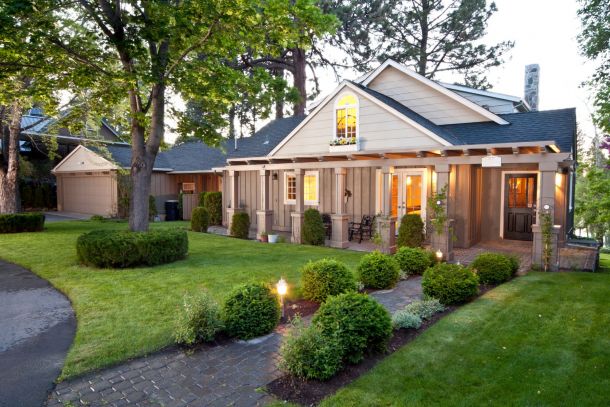History of the Washington Park Bungalow

As we have been spending more time close to home this last year, walking through the neighborhood can be a nice outdoor respite where one can marvel at the different architectural styles throughout the Wash Park East community. Our neighborhood is rich in history and one prominent area can be found in the many bungalows that still line the streets. Have you asked yourself why this was the popular style in our neighborhood? Or what is the difference between a bungalow and a craftsman’s home?
The bungalow form originated in South Asia and was designed to protect the homes from the hot sun by incorporating a wide roof to keep the porch and home shaded. The structure is one-to one-and-a-half stories tall with welcoming front porches and roof overhangs held up by visible beams and rafters. They gained popularity in California in the early 1900s then the trend moved across the country allowing many of the working class a chance at homeownership, based on the style being small and inexpensive.
The architectural style of our bungalows is called Craftsman, also known as the American Craftsman, which originated from the American Arts and Crafts Movement towards the end of the 19th century. Gustav Stickley, the founder, and editor of The Craftsman magazine helped spread the style across the country because his publication sold blueprints for homes that were designed in the Arts and Crafts style. Those features include Low pitched roof, wide eaves, a covered front porch, tapered porch columns, distinct fireplaces, and window seats and nooks.
The Wash Park East neighborhood grew substantially from 1920-1930 and was a blend of both white-collar and blue-collar neighbors. The Craftsman Bungalow was thought to be small, sweet, uncomplicated, and made with solid materials while offering a welcoming porch for visiting. This style was a good fit for our growing community. Although the traditional bungalow sized at 1,000-2,000 square feet with two-three bedrooms is functionally obsolete for today’s living, this style continues to be popular in our community, as data shows that 40 bungalows were bought in 2018 and 79 were bought in 2019. Many of the new homes being constructed still embrace some of the Craftsman features such as the covered porch, allowing us to socialize with our friends and neighbors outside, clearly a nice choice of style for our neighborhood.





